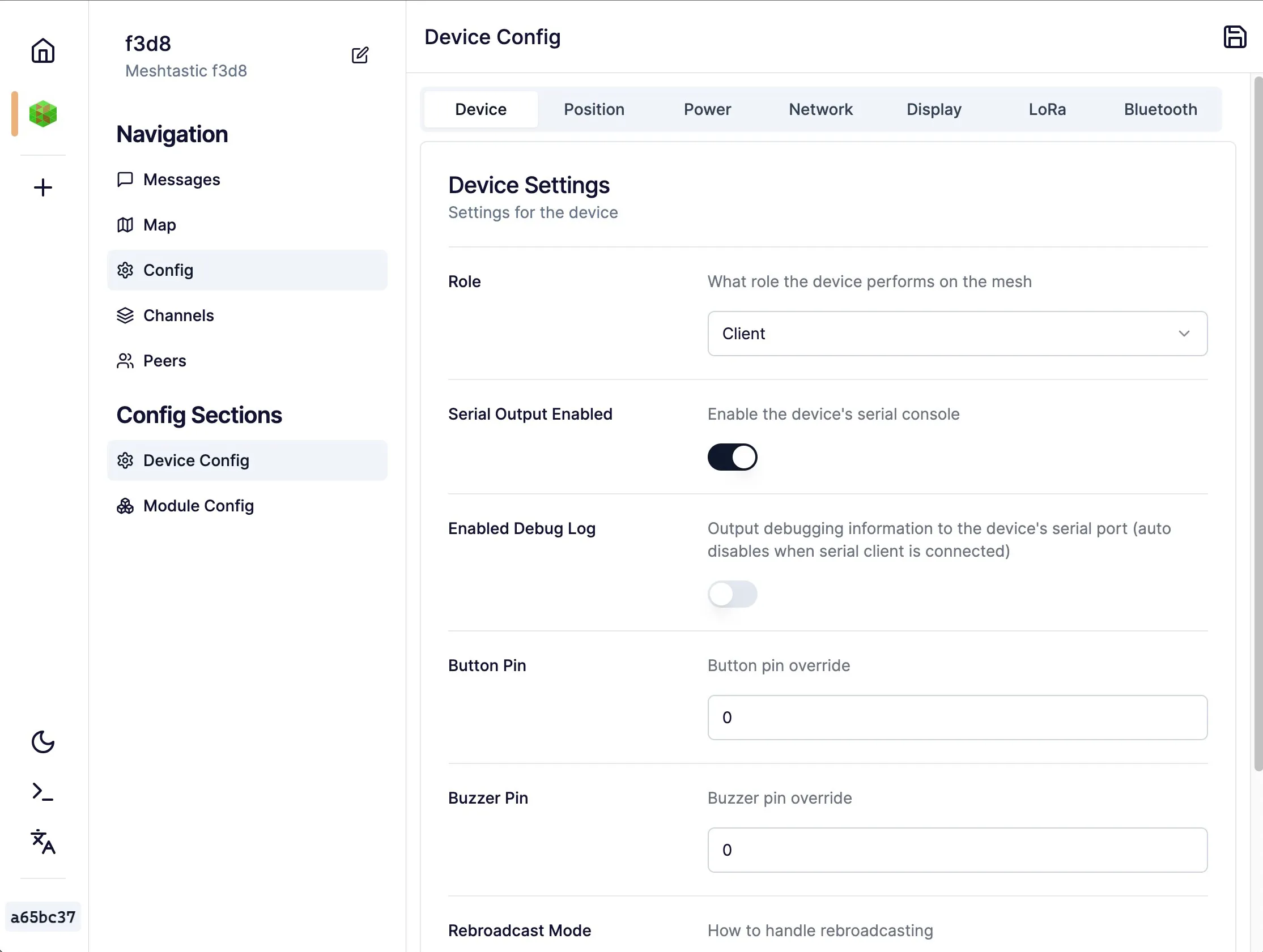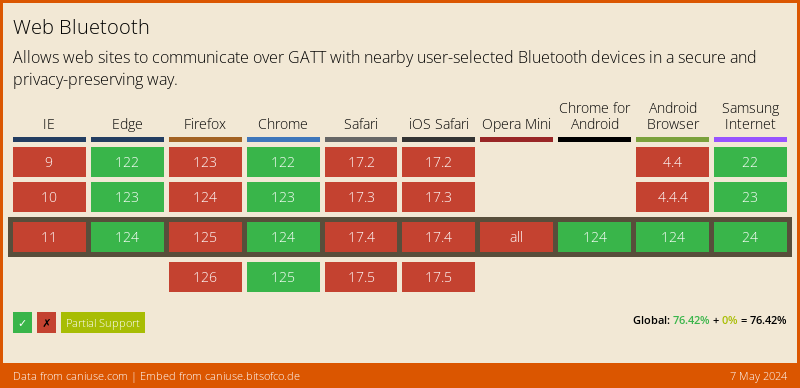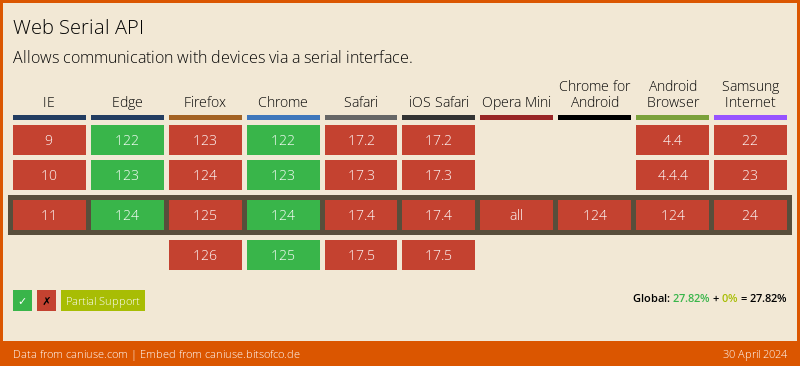Web Client Overview
Meshtastic Web is a Meshtastic client that runs directly in your browser. There are two ways of accessing the app:
- A hosted version located at client.meshtastic.org.
- Hosting it yourself.

Compatibility
The application will work in all major browsers, but specific functionality is limited in some cases. For the best experience we recommend using a Chromium based browser such as Google Chrome or Microsoft Edge.
HTTP
This method of connecting is limited to esp32 devices.
When using the hosted version of the application, all traffic must be served over HTTPS.
Meshtastic nodes generate self-signed certificates, and you must inform your browser that you wish to trust the aforementioned certificate.
This can be done by first accessing your node directly via your browser: https://NODE_IP_ADDRESS/ replacing NODE_IP_ADDRESS with the IP address of your node.
This can be found on the screen of the device, via your router's DHCP lease page or serial console.
You can accessing your device over HTTP after you set up your Network Connection
Bluetooth
Bluetooth support is governed by the availability of the Web Bluetooth API as illustrated below. Support is primarily available in Chromium based browsers.

Serial (USB)
The method with the least platform support, which uses the Web Serial API, allows us to connect directly to a Meshtastic node over USB and access it from directly within your browser.

Self Hosting
The source code for the WebUI can be found on our GitHub
Instructions for building and running the project can be found in the repo's readme.